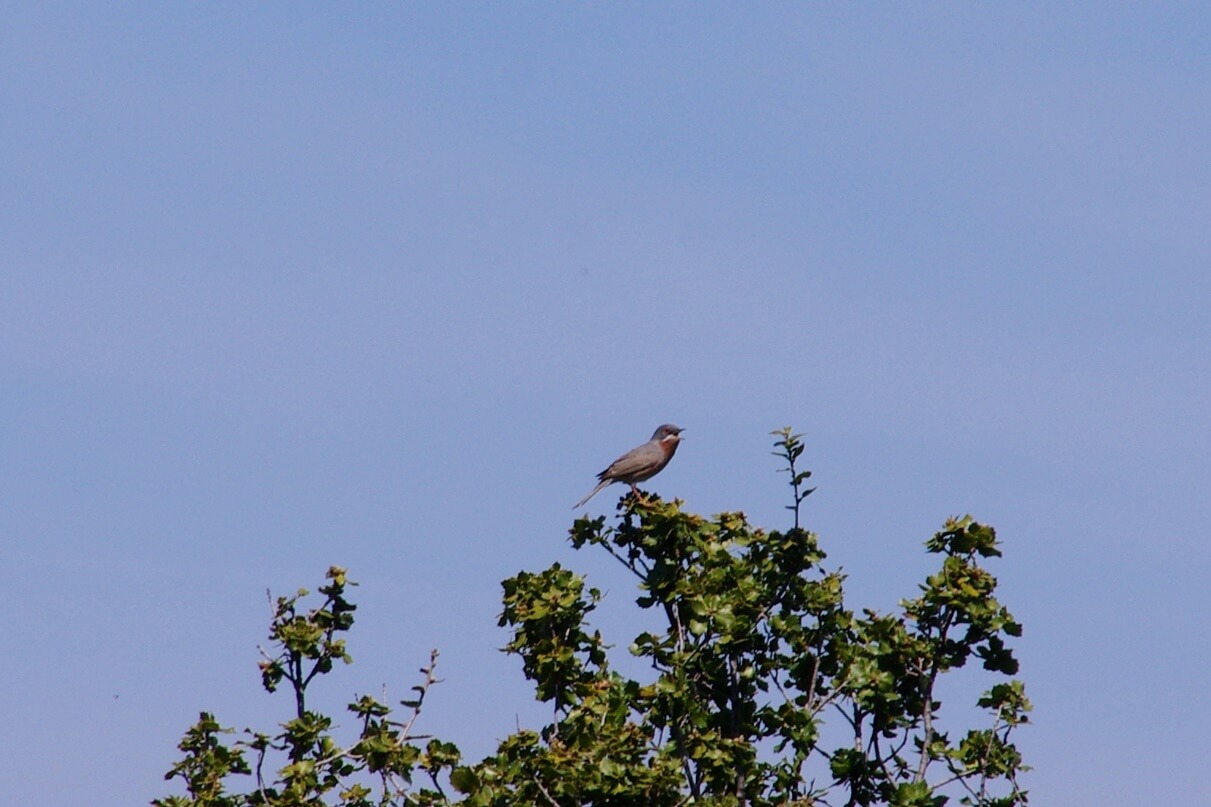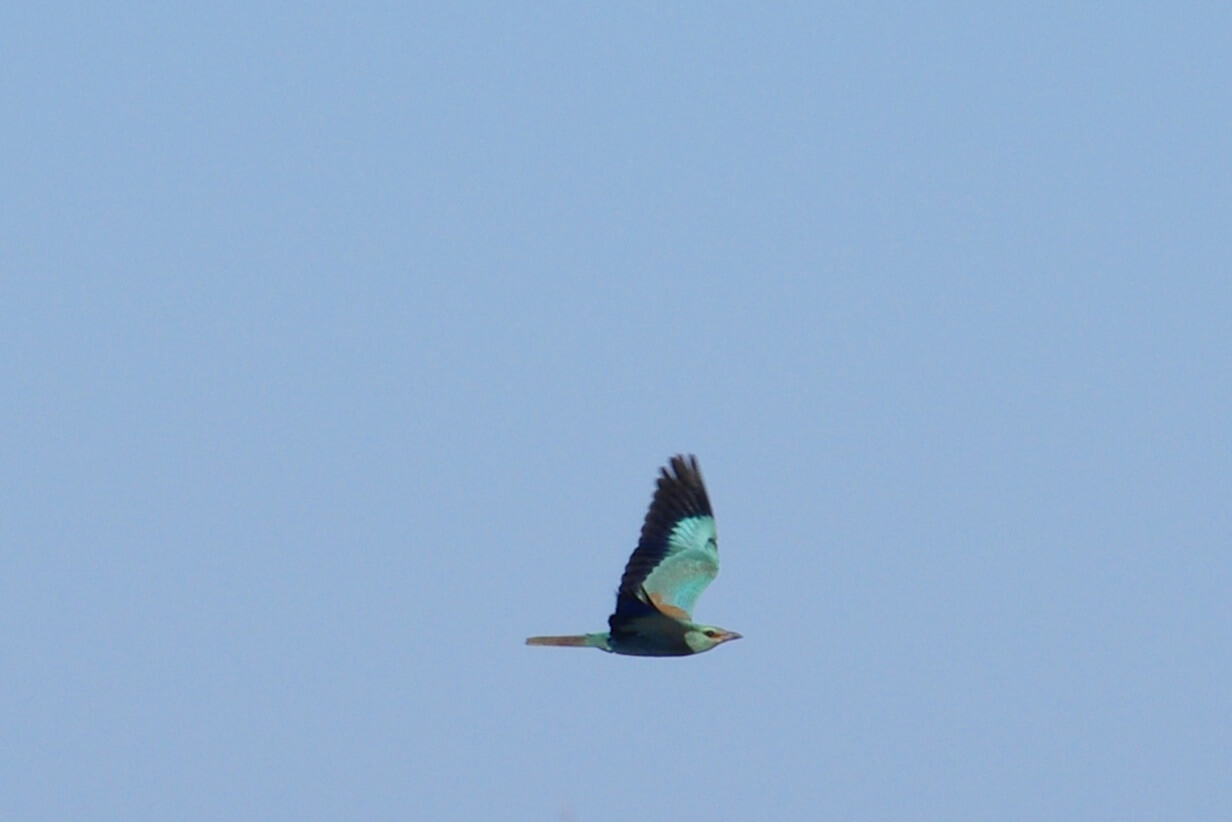
A visit to a place with the purpose of observing and recognizing birds in their natural environment is called bird watching or Ornithotourism and it is one of the most upcoming aspects of alternative forms of tourism worldwide. An occupation that gathers more and more bird lovers, "birdwatchers", "bird observers" or generally nature lovers, who enjoy bird watching, as an integral part of their experiential nature-based approach.
Like all the other human activities, bird watching tourism has also affected nature and biodiversity (Hellenic Ornithological Society 2009).
Advantages derived from Nature tourism include the awareness for protection issues, the income from visitors and tourists to observe rare avifaunal species and unique landscapes, the income from protection and management (eg. tickets to parks) and through the professional activities related to ecotourism, all of which benefit local community.
Among disadvantages we should mention habitats degradation mainly due to the expansion of tourist facilities, tourists arrival and the nuisance provoked to local community, the competitiveness among touristic infrastructures for natural resources (mainly water), the noise and the destruction of habitats caused by equipment (lights, vehicles, boats, etc.) or tourists behavior (rubbish, cut flowers, umbrellas, etc.) and the depletion of local natural resources (eg. herbs, fish, mushrooms) which quickly lead to wild species massive harvesting to extinction.

However, negative effects of birdwatching tourism are mild, reversible and can be avoided if we take the necessary measures and plan the implementation of good practices and behaviors. Birdwatching is an ecotourism activity, which mainly offers economic and social benefits to the local community, and represents a special effective means of raising awareness of the local population and visitors, in order to protect areas and avifauna species (Hellenic Ornithological Society 2009).
Kefalonia could definitely be a suitable place for birdwatching tourism. The 237 different bird species and subspecies (Vittery et al 1996) that have been registered so far, the diversity of habitats, and mainly the fact that the island is an important migratory node may significantly contribute to this conclusion. From the end of February to the beginning of May and from August to October, Kefalonia could be considered one of the most important destinations in Greece for bird watching. Migratory ratite species such as the Cretzschmar's bunting (Emberiza caesia - Fig. 1), the wheatear (Oenanthe oenanthe), the Black-eared wheatear (Oenanthe hispanica) and the bee-eater (Merops apiaster - Fig.2) arrive to the island in satisfactory numbers during the summer season. Other worth mentioned species registered at Aenos National Park are the western subalpine warbler (Sylvia cantillans), the goldcrest (Regulus regulus), the firecrest (Regulus ignicapilla), the coal tit (Parus ater), the Eurasian scops owl (Otus scops), the Eurasian jay (Garrulus glandarius), the short-toed treecreeper (Certhia brachydactyla) etc. Once in Aenos fir forest thrived the black woodpecker (Dryocopus martius), which is the largest woodpecker found in Greece, but unfortunately its last confirmed appearance was in 1993. Griffon vulture (Gyps fulvus) until a few decades ago was one of the most common birds found in Kefalonia, while now species is on the brink of extinction due to shifts in livestock systems and the use of illegal poison baits.


About 60 additional species mate either regularly or occasionally. Regular breeding species include the black-winged stilt (Himantopus himantopus), the Eurasian blue tit (Cyanistes caeruleus) which nests in satisfactory rates in various habitats, the great tit (Parus major) which seems to represent a model of an expanding population with a considerable portion of permanent existance, the woodchat shrike (Lanius senator), the crested lark (Galerida cristata), the black-headed bunting (Emberiza melanocephala), etc.
During the two migratory seasons, Kefalonia is an excellent place for birdwatching and could potentially attract a significant number of bird observers. At spring, during which migration includes a major number of populations, many ratite species (sylviids, wheatears, red-backed shrikes, larks, etc.), as well as non-ratite bird species such as herons, glossy ibises, predators, Charadriiformes, bee-eaters, hoopoes, turtle doves, wood pigeons, golden orioles and other deluges of avifauna species spot on the island. What makes the island particularly attractive to birdwatchers, however, are some unusual species of regular and occasional avifauna.

Among the regular or almost regular ones we mention the wigeon (Anas penelope), the teal (Anas crecca), the pintail (Anas acuta), the garganey (Anas querquedula), the Levant sparrowhawk (Accipiter brevipes), the osprey (Pandion haliaet), Eleonora's falcon (Falco eleonorae), the red-backed shrike (Lanius collurio), Bonelli's warbler (Phylloscopus bonelli), the icterine warbler (Hippolais icterina), the hoopoe (Upupa epops - Fig. 4), etc. Occasionally or accidentally occurring bird species include the black-crowned night heron (Nycticorax nycticorax), the purple heron (Ardea purpurea), the squacco heron (Ardeola ralloides), the tufted duck (Aythya fuligula), the black kite (Milvus migrans), the hen harrier (Circus cyaneus), the Montagu's harrier (Circus pygargus), the crane (Grus grus), the grey plover (Pluvialis squatarola - Fig. 3) and the gull-billed tern (Gelochelidon nilotica) (Xanthakis et al 2015).
Migration in autumn, although abundant in bird populations size, is somewhat disadvantaged for a variety of species except predators. Kefalonia represents a stopover site for large flocks of honey buzzards, hen harriers, black kites, red-footed falcons and many others, during their long distance migration. Other interesting species, commonly detected this time of year comprise woodcock (Scolopax rusticola), quail (Coturnix coturnix) and robin (Erithacus rubecula). However, one of the most impressive events is the arrival of herons and other aquatic and seabirds in the wetland of Livadi and Koutavos Lagoon. This annual phenomenon takes place from the end of August and culminates in January according to mid-winter count data.

During the winter months there are several species overwintering in the island (Fig. 5). Wetlands host congregate numbers of aquatic & seabirds. Spectacle of greater flamingo Phoenicopterus roseus in Livadi is impressive. Generally in winter there are not enough species on the island to attract bird watchers' attention. Some exceptions may be the rock partridge (Alectoris graeca), the kingfisher (Alcedo atthis) and the northern wryneck (Jynx torquilla), a species of wryneck in the Woodpecker family. The most important habitats of the island for bird watching is the habitat of Livadi in Paliki which includes among others, the homonymous wetland and areas that are traditionally cultivated and bred cattle. Koutavos Lagoon is another important habitat, especially during the winter months. Aenos National Park is of great interest since it is a mating site for several forest species (Fig. 6). In recent years for example, the golden eagle (Aquila chrysaetos), which is a bioindicator assessing the island ecosystem health, has been regularly recorded in Aenos National Park. The area of Cape Mounta is undoubtedly the best place for bird watching, especially during the migration in spring. Paliki (Fig. 7), Erissos and Fiskardo are also very productive areas during the same season. Mosaic pattern of agricultural land and natural vegetation in Kefalonia is an important habitat for bird species.

There are more than 65 travel agencies in the UK, such as Limosa, birdfinders, Naturetrek, Spatia Wildlife and others, specialized in bird tourism, organizing at least 12.000 excursions per year (Hellenic Ornithological Society 2009). Taking into account statistical data, Greece may result the fifth destination for bird watchers addressed to the afore-mentioned ecotouristic offices. Kefalonia may be also advertised to ornithological magazines as a bird watching destination.
Lesvos, Greece is the third most popular place according to British tourist offices, for bird tourism. Every spring the island operates a statement of earnings of 4-5 million € (Hellenic Ornithological Society 2009) deriving from bird watchers, who come in groups with charter flights to see and photograph Krüper's nuthatch, Cinereous bunting and other rare and protected bird species of Lesvos. It is also important to mention that in addition to Britain, major bird tourism market in the world also include the Netherlands, France, Germany, Italy and the Nordic countries which provide the major volume of visitors arriving in Greece, in the context of mass tourism. Therefore, this market is familiar with Kefalonian entrepreneurs of tourism, so that tourists could be easily approached for the promotion of bird watching. Benefits deriving from the extension of the touristic season are obvious, so it is important to act having a precise plan and proper specifications.

The effort to promote eco-tourism and bird watching in protected areas of the Mediterranean has been the goal of many research projects such as the Mediteraves project. The implementation of this research was carried out by ornithological organizations of Mediterranean countries which tried to show residents how to increase their income through tourism by promoting the pleasure to stay in these areas and admire local flora and fauna. Besides, there are thematic exhibitions such as Birdfair, the most numerous and important bird tourism exhibition in the world, which is organized annually and attended by more than 350 exhibitors from almost all over the world, coming from various sectors directly or indirectly related with bird watching, and awareness about avifauna conservation. Exhibition participants derive from specialized tourism agencies, optical and photographic companies, publishing houses, painters, clothing companies, government agencies, non-profit organizations, etc. In such an exhibition it would be interesting also the participation of Kefalonian institutions.
Undoubtedly, a lot remains to be done, so that Kefalonia acquires the ornithological significance it deserves. It should be noticed that except of the beautiful beaches and ancient monuments we should also focus on the natural environment and respect it by applying actions of alternative and thematic tourism to protect environment for future generations.
References
- Vittery A, Bauchinger U, Giese K, Kallhardt F, Meimberg H, Mommertz S, Lang A, Klarenberg A & Panou A (1996) Recent observations on the avifauna of Kefalonia (Ionian Islands, Greece). 7th International Congress on the Zoogeography and Ecology of Greece and Adjacent Regions, Athens, 1-5 April 1996 (poster)
- Hellenic Ornithological Society (2009) Oionos, Issue 37
- Xanthakis M, Lysitsa G & Minetos P (2015) Importance of Livadi wetland for the conservation of aquatic avifauna species of Kefalonia. In the Proceedings of the 17th Panhellenic Forestry Conference, Argostoli, Kefalonia, October 4-7
The article above was published in the magazine "The Kefalonian Progress" Period B, issue 24, October - Dicember 2017
The photos come from the photographic archive of the Natural Environment and Climate Change Agency and the Wildlife Photographer Christos Maroulis that we warmly thank.